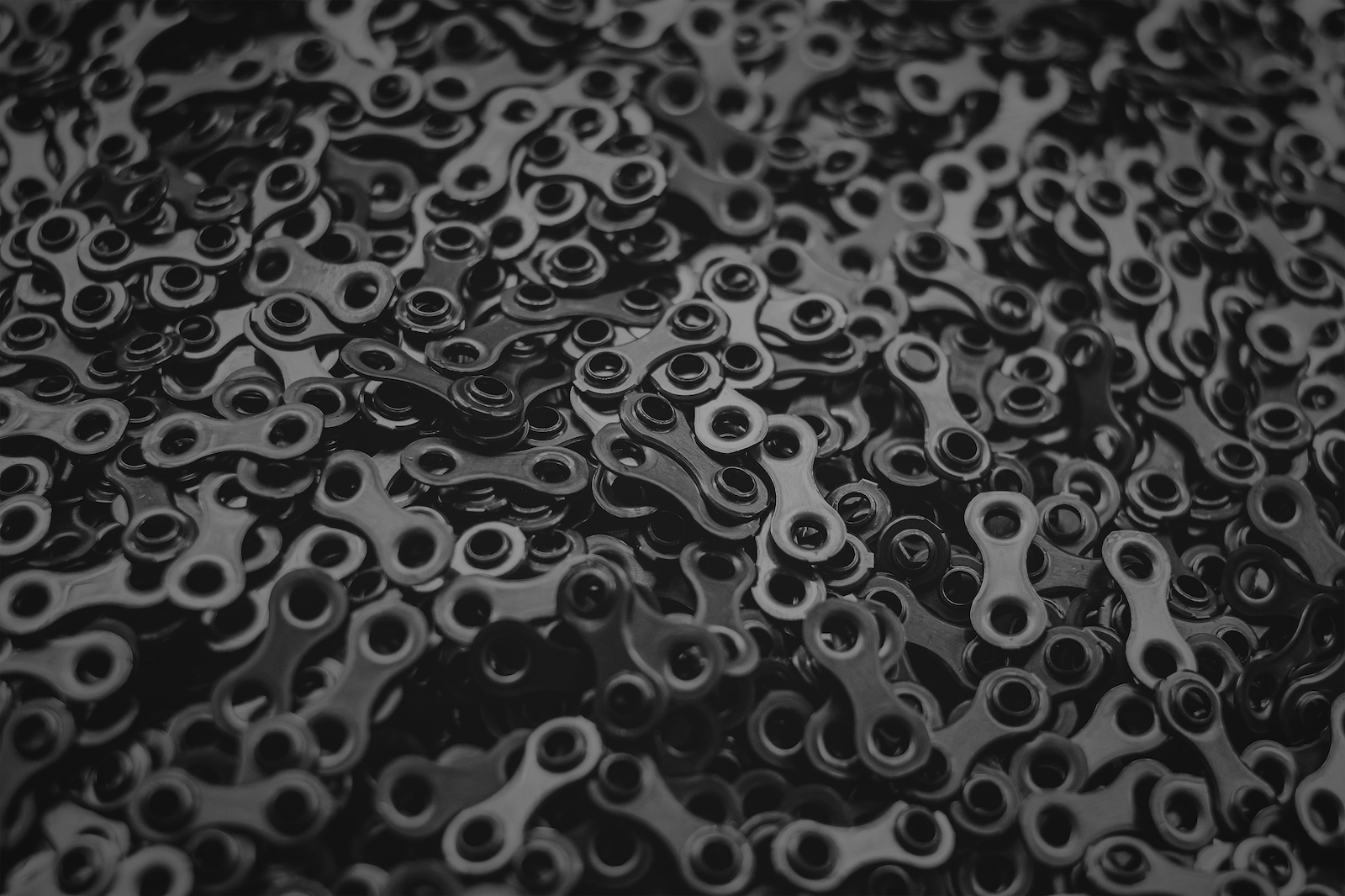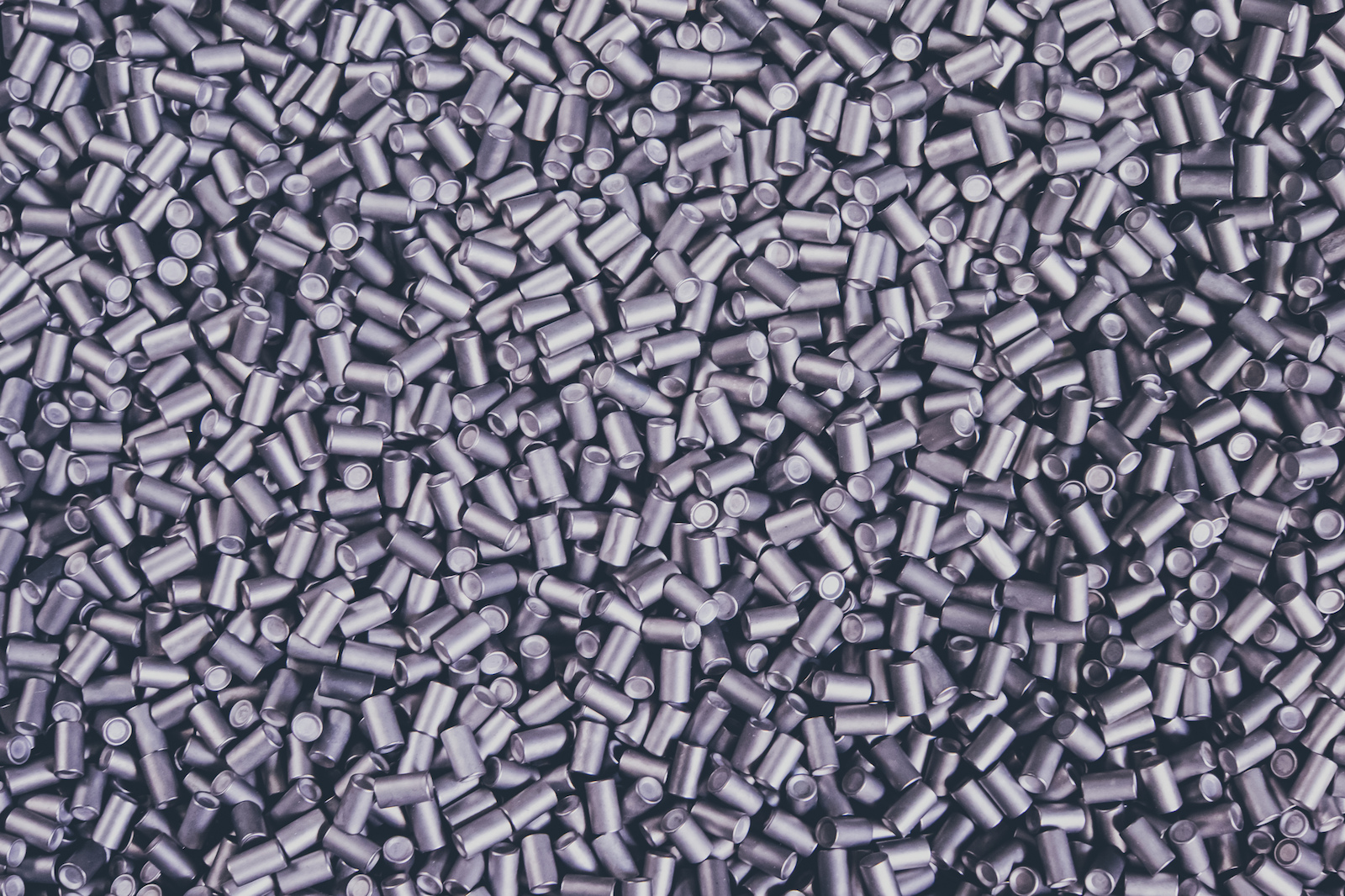Connection: SRAM's Portuguese Chain Manufacturing Facility
CONNECTION
An Introduction to SRAM's Coimbra Family
Words by Joe Parkin, SRAM Writer // Photography by Adrian Marcoux
In January of 2018, the SRAM chain development and manufacturing facility in Coimbra, Portugal, turned 50. For the past half-century, dedicated people and intricate machines inside this factory have converted raw metal into the bicycle drivetrain component that connects all the others-the chain.
The Coimbra factory's first contract came from the French manufacturer Peugeot, who needed chains for its bicycles and mopeds. Then came Sedis chains. The German bicycle, motorcycle and automotive component manufacturer Sachs ultimately acquired the Sedis brand and then, in 1997, SRAM bought the Sachs bicycle division. And with that, SRAM Portugal was formed.
Chains from this factory have propelled bicycles to grocery stores throughout the world, helping to deliver food for billions of meals. They've carried students to school and employees to work. They've helped people of all ages find the freedom of bicycling. And they've won just about every bicycle race on earth.
Chains look simple. They're composed of inner and outer plates and rollers, which are connected by pins. Their look, whether the design intent is for heavy machinery, automotive, motorcycle or bicycle use, is basically the same. Even the most modern bicycle chains look mostly similar to the ones first seen on bicycles in the late 1800s. Until that is, you look at them close up.
Though men outnumber women by the slightest of margins at SRAM's Portugal chain factory, the boss is Isabel Gomes (far right) who started her career here in the 1990s, and spearheaded the facility's first ISO certification. Two generations of Reis men help keep chains coming off the line-Antonio Reis is a master toolmaker who is closing in on four decades of employment at the factory, and his son Pedro, an electrical engineer, is a cog in the automation and integration of the facility's many machines. Pedro Santos (left) leads SRAM's chain engineering effort in Coimbra. He holds in his hands hundreds of chain designs, many of which were drawn by hand. Many of those old designs were impossible to make when they were first conceived, but some may hold the secrets to tomorrow's bicycle drivetrains. Eugenia Martins (far left) serves as SRAM Portugal's Quality Manager, and is tasked with ensuring that manufacturing here meets the latest international certification, and that the many kilometers of chain coming off the lines here each week adhere to the highest possible standards.
The facility has been operating since 1968. There are plenty of other factories that have been operating for 40, 50, 60 years or more that have stopped being relevant, but that hasn't happened in Coimbra.
There's a strong cultural and human element to this place's success. If you want to understand what makes Coimbra special, look no further than the region's rich intellectual heritage and its people.
Europe's western-most country, Portugal explored the globe during the 15th and 16th centuries and brought home maps of new landscapes to Europeans. Coimbra has a close connection to Portugal's heritage of discovery and hosts one of the oldest continually operating universities in the world. Originally founded in 1290 in Lisbon by King Dinis, The University of Coimbra was eventually permanently located to Coimbra in 1537.
SRAM has built a special connection with the University of Coimbra and encourages its leading engineering students to intern at the chain development facility. Some students also go on to work there after graduation. It's proven a fruitful connection. The majority of engineers working at SRAM's Coimbra factory came from the University of Coimbra.
Newly constructed, the modern 3-story open office space houses the business administration and engineering staff. A basement-level test lab allows engineers to test, prove and improve not only their design philosophies, but also SRAM's manufacturing processes.
More cogs means more complexity. When this factory in Coimbra first began producing chains, each one of these vertical columns would be producing chain outer-plates. With an Eagle chain, each one of these columns is another step in the process of creating the plate shape for Eagle's 10-50t cassette.
The factory building, where the meticulously engineered chains are produced, is located just a few steps behind the new office. As you enter, large rolls of steel immediately draw your eye. The rolls are fed into the massive stamping machines, where the raw material becomes an inner or outer plate for one of SRAM's many varieties of chains.
If you follow the path of the ribbons of metal being drawn in for stamping, you see racks hold seemingly endless amounts of raw materials. But though it looks endless, these racks are depleted twice weekly, for a sum total of roughly 50,000 kilograms of raw material per week. If you look left, you'll find an impressive collection of machines dedicated to maintaining the tooling needed to stamp and cut the individual components of each chain.
Once the raw metal has been converted to a chain component, it is subjected to multiple rounds of treatments designed to make it stronger and more durable. There are also processes to make the final chain assembly more uniform.
These steps involve both chemical and heat treatments at varying temperatures. The chain components are finished with a succession of polishing rounds. Many of the machines used in this part of chain manufacturing date back to the early days of the factory, but each has been retrofitted over time to automate it and add quality controls.
Waste not. Compared to the massive amount of raw metal that comes into this factory each week, the amount of scrap sent out for recycling is miniscule. And yet those charged with steering SRAM Portugal in an ever-Greener direction are constantly seeking to reduce the energy used and the waste created by this facility. The Portuguese government mandates a reduction in total energy draw year by year, but the chain factory is ahead of that curve.
Chain science | From raw metal to packaged product, about the only process not done here in the Coimbra factory is the gold color marking XX1 Eagle chains. There are, however, myriad chemical and heat-treating processes that the individual chain components are subjected to before they are assembled.
If you weren't already mesmerized by the noise of stamping operations, the heat and glowing spectacle of the small chain pieces being poured from the well-worn furnaces will captivate you.
Finally these stamped and treated and polished chain pieces are placed into bins and carted off to another massive wall of racks. There they wait for final assembly.
During assembly, machines that continue to be refined and adapted to each new chain technology feed the individual chain parts through the process. Sensors alert the operators to anything that might compromise the integrity of the final product.
And it is incredibly impressive to watch as piles of chain collect on tables, are fed through machines that pre-tension them, test for any possible defect, and lube them before final packaging. Some chains will be packaged in big bulk rolls, others in boxes of complete chains cut-to-length, and still others are individually packaged for retail sale.
The most impressive thing about the bicycle chain is its uniformity. Every link has to perform as well as the last one (more than a hundred times per chain) constantly and consistently throughout its life cycle. If you're lucky enough to see this process in person, you will place a greater importance on the humble component that connects your drivetrain and makes your bike go.
Hardened by heat | From the low-temp treatment that chain parts receive post-chemical treatment, to the hours-long heat that pins endure, to time in the Ripoche ovens or the fire breathers, to the behemoth furnaces that spit out hundreds of plates at a time, heating treating is an essential part of the overall chain equation.
The modern high-performance bicycle chain is quite different than those that Coimbra produced back in the late 1960s. Chains now are lighter weight, require more advanced manufacturing processes, and are subjected to greater stresses by riders.
Quality is a common theme here in Coimbra. The facility's workers, from the front office to the assembly technicians, live it and breathe it. Flags signifying the most current levels of ISO Quality and Environmental certification fly proudly next to the SRAM logo painted on the factory. These are not levels of certification that are easy to achieve, and SRAM was the first company in Portugal to reach the sought-after ISO 9001 : 2015 certification.
Facts and figures | Each assembly machine counts in the thousands of meters. Collectively, these machines are producing more kilometers of SRAM chain than most mountain bikers average per week.
Each day, the factory tests raw materials for uniformity, tests assembled products for quality, tests processes for accuracy, and investigates new ideas about chain design for their feasibility. After the initial intrigue of old machine tools and stamping operations and heat treating and the sight of actual kilometers of chain being produced, when we exit this factory, we're treated to a story that reinforces the fact that this place is decidedly human.
In the early days of the Coimbra factory, night shift workers decided that one of their heat-treatment furnaces operated at the perfect temperature to cook one of Portugal's most beloved foods: cod. The workers rigged up the furnace and began preparing Cod and Potatoes Ripoche, named for the French-manufactured furnace where they cooked the dish. It was a hit.
Eventually, engineers on routine quality checks noticed chain parts that were covered in a strange layer of grease. That meant the end of the Ripoche food-preparation method.
Portugal's ancient sea-going tradition has long treasured the codfish and continues to honor this humble animal in its cuisine. Portuguese cooks mastered the storage and preparation of these and other fish long before modern methods of refrigeration and cooking were available. When someone from Portugal tells you that there are at least 365 ways to prepare codfish-one for each day of the year-they are really telling you that there are actually thousands. And tomorrow's method will be even better than today's.
The measure of a great cook is their ability to blow you away with the simplest and most humble of ingredients-again and again. The measure of a great factory is its ability to take a bicycle component that seems on the surface to be simple, and improve it every single day.
Every SRAM chain is proudly system-engineered and manufactured in Coimbra, Portugal.
Story by SRAM.
MENTIONS: @SramMedia
Author Info:
Must Read This Week
[UPDATED] Final Elite XC Results & Overall Standings from the Mairiporã XC World Cup 2024
41942 views
41942 views
Sign Up for the Pinkbike Newsletter - All the Biggest, Most Interesting Stories in your Inbox
PB Newsletter Signup

















































 Member since Apr 1, 2011
Member since Apr 1, 2011
I really dig these articles that put ‘faces to craft’. Thanks for making chains! Unlike a certain WC downhiller I actually need them.
...when we're not riding our $6000 bikes that we replace with new every season or two.
Keep up the good work guys!
You are 100% correct.
SRAM chains are likley "engineered" to wear fast your drivetrain–and your wallet.
SRAM top of the line chain last 2/3 of a Shimano chain and 1/3 of a Campagnolo chain.
TEST:
www.bikerumor.com/wp-content/uploads/2018/01/Wippermann-connex-chain-11-speed-wear-test-results-2.jpg
#metoo
Cardboard might be worse for the environment than plastic.
Here's an easy to read interview of an american chemistry professor. If you think he's biased or his statements are bullshit research for yourself.
cascade.uoregon.edu/fall2012/expert/expert-article
At least this is how the old world sees the US...
From my experience in retail packaging has more to do with merchandising than anything else. When you visit a bike shop, think about where most parts are kept. The company with the bigger, more uniform colored, evenly organized box is going to be way more noticeable behind a counter/up on a shelf in an open shop or even on a sales rack than a box smaller than a fist amongst 600 other small boxes.
Take the new eagle shifter boxes for example, Jet black with a mirrored eagle encompassing 5 sides of the box, size 9 font saying sram ___ in dark red/mirrored black squished in the upper right hand corner. Stands out among all other shifters by a long shot. open it up and find shifter and manual tucked neatly into less than half the box.
@kmg0 - yeah, it's just that there are tens if not hundreds of thousands of them and vast majority ends up in trash 1 minute after people take the stuff out of them
This is no statement that they produce rubbish, never used their chains
Average:
ipfs.io/ipfs/QmXoypizjW3WknFiJnKLwHCnL72vedxjQkDDP1mXWo6uco/wiki/List_of_countries_in_Europe_by_monthly_average_wage.html
&
www.reinisfischer.com/average-salary-european-union-2017
Min Wage:
www.eurofound.europa.eu/observatories/eurwork/articles/statutory-minimum-wages-in-the-eu-2017
Don't forget, that you must compare everything (housing cost/food/etc
Their salary is like 600-700 and they do shifts (it is an average salary in Portugal)!
The engineers obviously earn more.
The only benefit of working there is that employees get SRAM parts way cheaper than us...
Anyway, good article, always found SRAM chains hit the sweet spot of vfm and durability, and made in EU is a bonus
Now take your conclusions.
WHAT ABOUT GWIN
Just trying to keep the ol' "boycott stuff because of connecting dots" theme going.
In other words *ADVERT* made to look like an article.
Top journalism there PB.
so for me: even though i really want to support jobs in europe. i cant buy these shit chains anymore. have to get quality from asia instead.